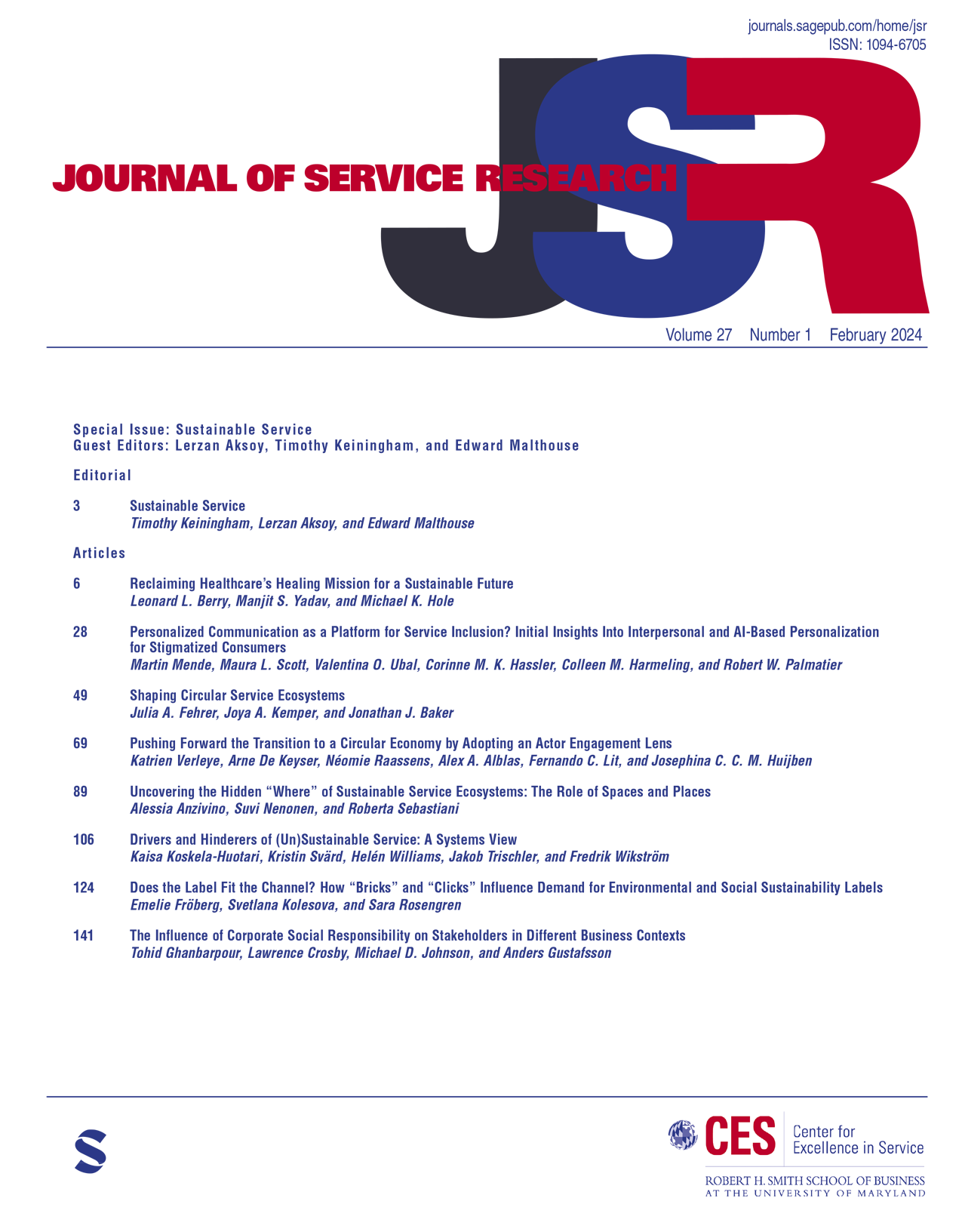Affect-as-Information: Customer and Employee Affective Displays as Expeditious Predictors of Customer Satisfaction
IF 8.6
2区 管理学
Q1 BUSINESS
引用次数: 0
Abstract
This study introduces affect-as-information theory to the service encounter, integrates it with the peak and end model of affect, and thereby shows that these dynamic customer and employee affective displays can be used to estimate post-encounter customer satisfaction. A large-scale dataset of 23,645 real-life text-based (i.e., chat) service encounters with a total of 301,280 genuine messages written by customers and employees were used to test our hypotheses. Automatic sentiment analysis was deployed to assess the affective displays of customers and employees in every individual text message as a service encounter unfolded. Our findings confirm that in addition to customers’ overall (mean) affective display, peak (i.e., highest positive or least negative), and end (final) affective displays explain customer satisfaction. Further, as customer displays may not fully capture their satisfaction process and employees understand the service quality they deliver, we propose and confirm that employee displayed affect explains further variance in customer satisfaction. We also find that the predictive power of affective displays is more pronounced in service failure than non-failure encounters. Together, these findings show that automatic monitoring beyond customer overall affect (i.e., adding customer peak and end, and employee affective displays) can expedite the evaluation of customer satisfaction.情感作为信息:顾客和员工情感表现作为顾客满意的快速预测因子
本研究将情感作为信息的理论引入到服务相遇中,并将其与情感的峰值和终点模型相结合,从而表明这些动态的顾客和员工情感表现可以用来估计顾客相遇后的满意度。我们使用了23,645个基于真实文本(即聊天)服务的大型数据集,以及客户和员工编写的301,280条真实消息来测试我们的假设。自动情绪分析被用于评估客户和员工在每条短信中的情感表现。我们的研究结果证实,除了顾客的整体(平均)情感表现外,峰值(即最高的积极或最少的消极)和最终(最终)情感表现解释了顾客满意度。此外,由于顾客表现可能不能完全捕捉他们的满意过程,员工理解他们提供的服务质量,我们提出并确认员工表现的影响解释了顾客满意度的进一步差异。我们还发现,情感表现的预测能力在服务故障中比在非故障遭遇中更为明显。总之,这些发现表明,超越客户整体影响的自动监控(即,增加客户峰值和结束,以及员工情感显示)可以加快客户满意度的评估。
本文章由计算机程序翻译,如有差异,请以英文原文为准。
求助全文
约1分钟内获得全文
求助全文
来源期刊

Journal of Service Research
BUSINESS-
CiteScore
20.30
自引率
6.50%
发文量
28
期刊介绍:
The Journal of Service Research (JSR) is recognized as the foremost service research journal globally. It is an indispensable resource for staying updated on the latest advancements in service research. With its accessible and applicable approach, JSR equips readers with the essential knowledge and strategies needed to navigate an increasingly service-oriented economy. Brimming with contributions from esteemed service professionals and scholars, JSR presents a wealth of articles that offer invaluable insights from academia and industry alike.
 求助内容:
求助内容: 应助结果提醒方式:
应助结果提醒方式:


